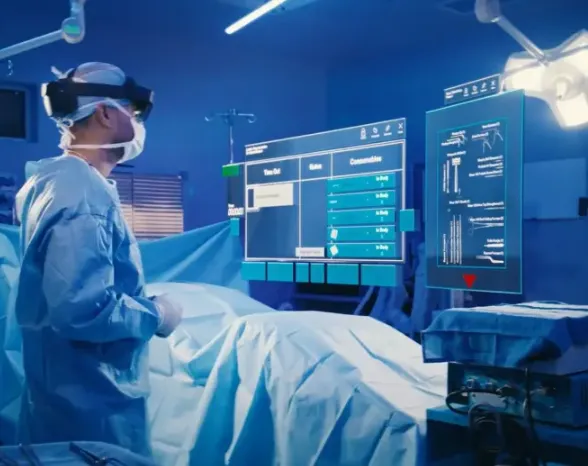Surgeons at UC San Diego Health have begun incorporating Apple’s Vision Pro headset into their minimally invasive surgeries, marking a significant breakthrough in the use of augmented reality (AR) technology in healthcare. Dr. Santiago Horgan, a pioneer in robotic surgery, believes the Vision Pro could have a similar impact to past medical innovations. In the past month alone, Dr. Horgan and his team have utilized the headset in over 20 surgeries, including procedures for acid reflux and obesity.
Improved Precision and Reduced Surgeon Strain
One of the standout features of the Vision Pro is its ability to display crucial patient information directly in the surgeon’s line of sight, eliminating the need for them to take their focus off the patient. Traditionally, during laparoscopic surgeries, surgeons rely on separate monitors to view camera feeds and patient data, which can lead to physical strain. With the Vision Pro, multiple virtual screens can be displayed within the surgeon’s view, such as CT scans and heart rate monitors. Dr. Horgan has found that this enhanced setup has significantly boosted his precision and alleviated physical discomfort during procedures.
Cost-Effective for Medical Facilities
While the Vision Pro’s $3,499 price tag may seem steep for individual consumers, it is a much more affordable option for hospitals compared to traditional medical monitors, which can cost upwards of $30,000. Dr. Christopher Longhurst, Chief Innovation Officer at UC San Diego Health, sees this as a major benefit, especially for smaller healthcare facilities. The more affordable price could help hospitals adopt advanced AR technology without placing a heavy financial burden on their budgets.
The Future of AR in Healthcare
Although the Vision Pro is not yet FDA-approved for widespread medical use, UC San Diego Health is continuing to test its capabilities. Dr. Longhurst believes that AR headsets like the Vision Pro could soon become standard tools in operating rooms across the globe. Early results from these trials are promising, indicating that AR technology could not only improve surgical outcomes but also enhance the efficiency of healthcare professionals.
Apple’s Vision Pro is not the only AR headset making waves in the medical field. Other companies, such as Augmedics and Vuzix, are also offering AR devices designed for surgical applications. However, the Vision Pro stands out due to its seamless integration with existing systems, making it a more accessible option for healthcare providers. As both Apple and other tech companies continue to push the boundaries of innovation, the role of AR in medicine is poised to expand, potentially reshaping the future of surgery.
